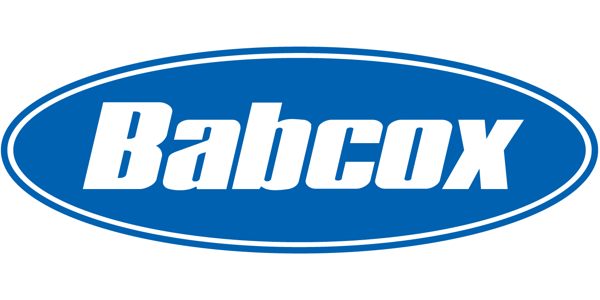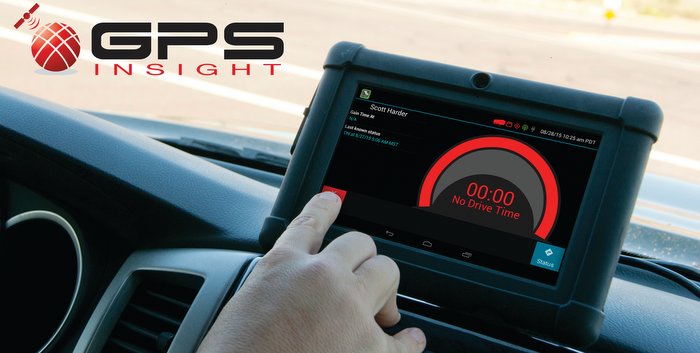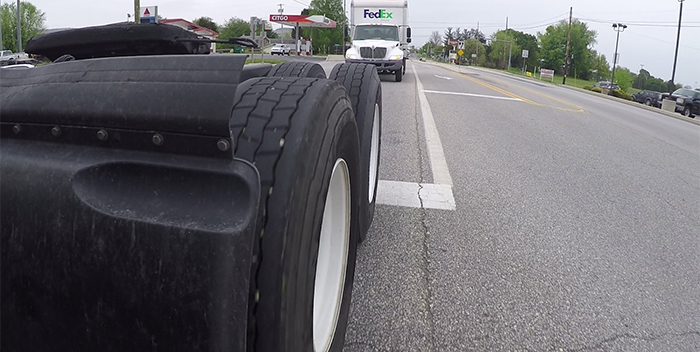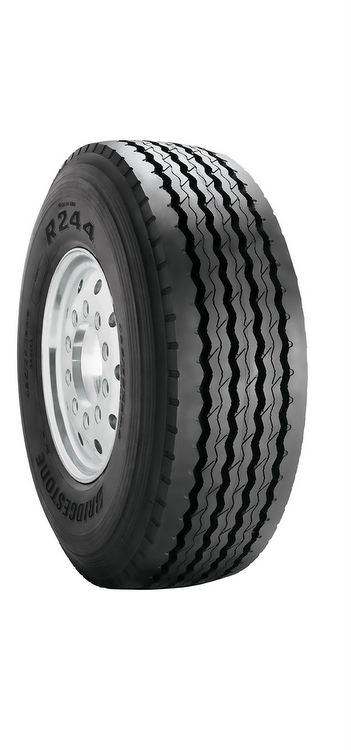Although one could correctly argue that the trucking industry has never been “easy,” things certainly seemed simpler back in the good old days. In many cases, when it came to vehicle maintenance and repair, employees learned the basics at school or perhaps home on a farm, then received whatever additional, specific training was required on the job.
My, how things have changed. Today—thanks to the vast range of Federal emissions regulations, the need for improved fuel mileage and a dizzying array of technological improvements—the fleet technician needs to be more knowledgeable than ever. However, due partly to the decline of the family farm and the elimination of many industrial arts classes from public schools, some of your current and potential employees may be at a distinct disadvantage.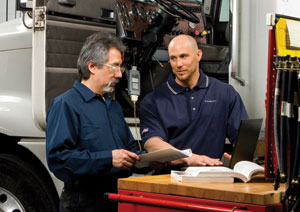
“Training has always been an important part of our program to support our dealer and fleet technicians,” says Rick Martin, manager of training and technical publications for ArvinMeritor. “However, in the early days of the industry, trucks were simpler and training was considered more as a solution to a specific problem than as a proactive tool to save money and prevent downtime. Component suppliers provided maintenance manuals for driveline, brakes and trailer components, which were the staple of training departments. Field representatives worked with fleets to help them with individual issues.”
In other words, if you needed to know how to repair a particular piece of equipment, you looked it up in a service manual or called your local field rep. No big deal: putting up with downtime was part of a fleet’s standard operating procedure.
As heavy-duty components became more sophisticated during the end of the last millennium, says Martin, it took more effort and guidance to identify and troubleshoot their problems.
“The industry’s offering of training materials expanded to include more troubleshooting guides. As it became practical to use VHS, this tool was incorporated into the training mix. Vocational education was seen as an excellent conduit to helping technicians learn about maintenance and repair methods. Classroom field training of fleet technicians picked up,” Martin says.
Obviously, downtime has no place in today’s modern fleet, so preventive maintenance is more important than ever. Luckily, so are the choices when it comes to choosing what type of training will be most beneficial.
How technicians learn
There are a multitude of professional and educational theories about how we learn, and most of them agree that there is no single style of teaching (or learning) that is effective in every case.
Training has evolved over the past decade, Martin explains, to include not only maintenance and troubleshooting manuals and field training, but also self-guided learning methods. “The industry’s training offering has come from being an as-needed effort in support of dealer and fleet technicians to being an integral part of the supplier’s offering to customers,” he says.
Many will remember when training updates were little more than plunking down in front of a VCR while a poorly produced video droned endlessly. While it may have contained valuable information and was state-of-the-art at the time, this “training” procedure may have produced more well-rested technicians than technical experts. Certainly, not all of today’s videos are guaranteed to be much better, but because video production techniques have gotten more professional, so have the products. With DVD technology (and newer standards coming along all the time), it’s easier for a viewer to find what is needed, watch it—often in cinematic quality—and move on.
The need for training has never been more critical. From the economic importance of keeping your trucks on the road to the requirement of following proper procedures to keep employees, customers and the public safe, ensuring your technicians learn what they need to may be a less challenging decision than how they learn it.
“Technology has not only helped the trucking industry evolve to new levels of efficiency and cost effectiveness, but it has also helped those involved with technical training keep pace with the many changes that have occurred in the industry as well,” explains Martin. “But keeping technicians current on the variety of drive axle, brake, clutch, transmission, trailer and electronic vehicle control systems available today is a daunting task for dealers and fleets feeling the pinch of competition and the challenge of worker diversity.”
So how do you train effectively and economically? In many cases, you have a choice.
•Classroom training: Many training providers have facilities across the country that allow you to send employees to learn using the latest technology and the benefit of extremely compact class sizes (often one-on-one instruction is provided).
Don’t have the budget to send your staff away for training? Often, trainers from manufacturers or suppliers will come to you, saving the hassles of travel and allowing more of your staff to be trained simultaneously.
If classroom training is the right method for your situation, but bringing in a live instructor isn’t an option (for remote locations or other challenging situations, for example), satellite learning may be an alternative. Today’s HD video monitors and Internet technology mean simulcasts of classroom learning experiences can be just like being in the room with the instructor. Two-way communications via Web cams allow instant dialogue and a surprisingly natural experience. Of course, the old standby, video, is yet another way classroom learning can be accomplished, although as mentioned earlier, today’s offerings are generally much more effective than those produced even a few years ago.
• Non-classroom-based learning: Many businesses are turning to non-traditional methods of instruction as the need for training becomes more acute. Online training offers many advantages that make it increasingly attractive.
Fontaine Fifth Wheel offers free technician training on fifth wheel installation, operation, maintenance, trouble-shooting and rebuilding through its website (www.fifthwheel.com), explains Fontaine’s Vice President, Sales and Marketing, Terry Mennen. The training is divided into four modules: Product Identification, No-Slack II Rebuild, No-Slack II Coupling/Uncoupling, and No-Slack II Maintenance Procedures.
“Our free online training is convenient and easily accessible for new hires or experienced technicians who need a refresher or are looking for specific information,” says Mennen. “Putting these resources online makes them available at the technicians’ convenience, so the information is always there when it’s needed.”
Each interactive module provides a variety of in-depth educational resources for review, including training videos, instruction handbooks, technical bulletins, illustrations and more, followed by a multiple-choice quiz. The website keeps track of which modules a participant has completed. When all module tests are complete, Fontaine Fifth Wheel mails a certificate of completion to the participant.
In addition to the modules, Mennen explains that the training section of the website also offers a wealth of other instructional materials, including step-by-step trouble-shooting procedures, FAQs and preventive maintenance guidelines.
On-the-job training can easily be accomplished as well, thanks to the rapid growth of online technology. Technician trainees, as well as skilled technicians, can benefit from Repair-Connect, a new online service program now available from Mitchell 1. A technician simply enters a Diagnostic Trouble Code (DTC) from the vehicle he’s working on, and the system rapidly delivers the service information he needs. Based on the DTC, Repair-Connect anticipates and retrieves the exact information required to fix the vehicle, and it does so in 30 seconds or less. It can be a useful tool to train new technicians since it takes much of the guesswork out of the troubleshooting process.
“By using the intelligent diagnostic capabilities of Repair-Connect, truck service facilities can increase the productivity of all their technicians, as well as lower the operating cost of the vehicles they are servicing, by having repairs completed quickly and correctly,” says a Mitchell 1 spokesperson.
Features of Repair-Connect include:
• Repair-Connect automatically retrieves and clears DTCs, through a Vehicle Communication Interface (VCI) such as a NEXIQ USB-Link, or DTCs can be entered manually.
• Intuitive menu selections make navigation quick and easy.
• Repair-Connect delivers concise wiring diagrams displaying just the wires making up a particular circuit. Repair-Connect will also provide the entire engine diagram when needed.
• Thousands of digital photos provide detailed real-world views of component locations and wiring connectors.
The wealth of information that’s available online is staggering, and its value as a learning tool is equally impressive. According to TTi Online, a provider of instructional systems design solutions, interactive elements in online training products actively engage students in learning new information. Because online courses can be stimulating, interesting and fun, the company says the student’s retention rates are increased 25% to 60% more than with traditional classroom training. In addition, students are able to learn at their own pace, so they can quickly review material they understand well and spend more time with more challenging subjects.
Regardless of how you accomplish your training, your employees have a greater need than ever. Research the opportunities offered by OEMs, parts suppliers and other industry training resources. You’ll find that everything you need is likely just a visit, phone call or mouse click away. FE

